Website Traffic Sources
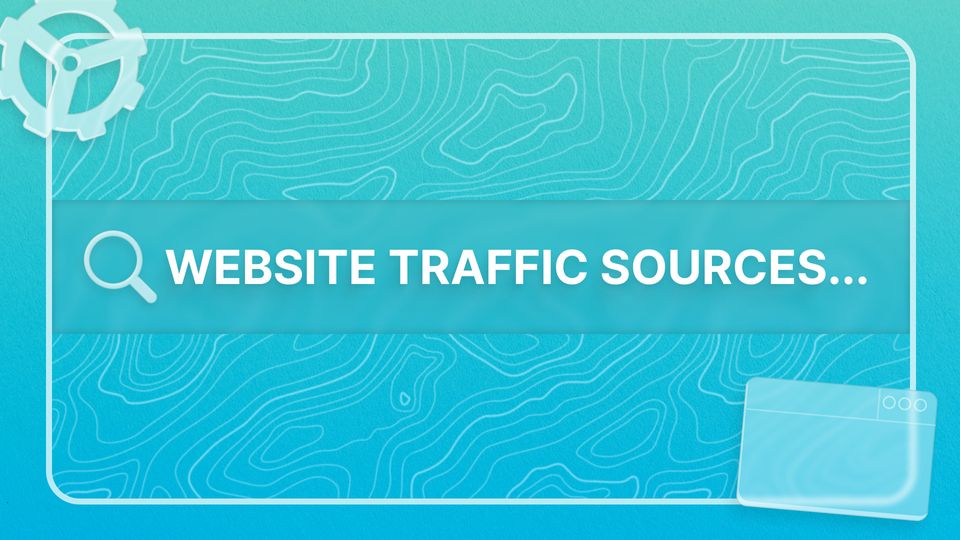
Traffic is the fuel for your advertising engine. No online promotion works without it. HilltopAds knows everything about traffic and its acquisition. Whether you’re a beginner in affiliate marketing or a seasoned veteran — we’ve got you covered.
Today, we’ll explain what traffic is, tell more about its types, focus on the advantages of paid vs. free traffic, and elaborate on the main sources. Also, we’ll go through the main metrics to watch out for, when assessing traffic’s quality. Become the king of the marketing hill with HilltopAds.
Traffic Source Definition
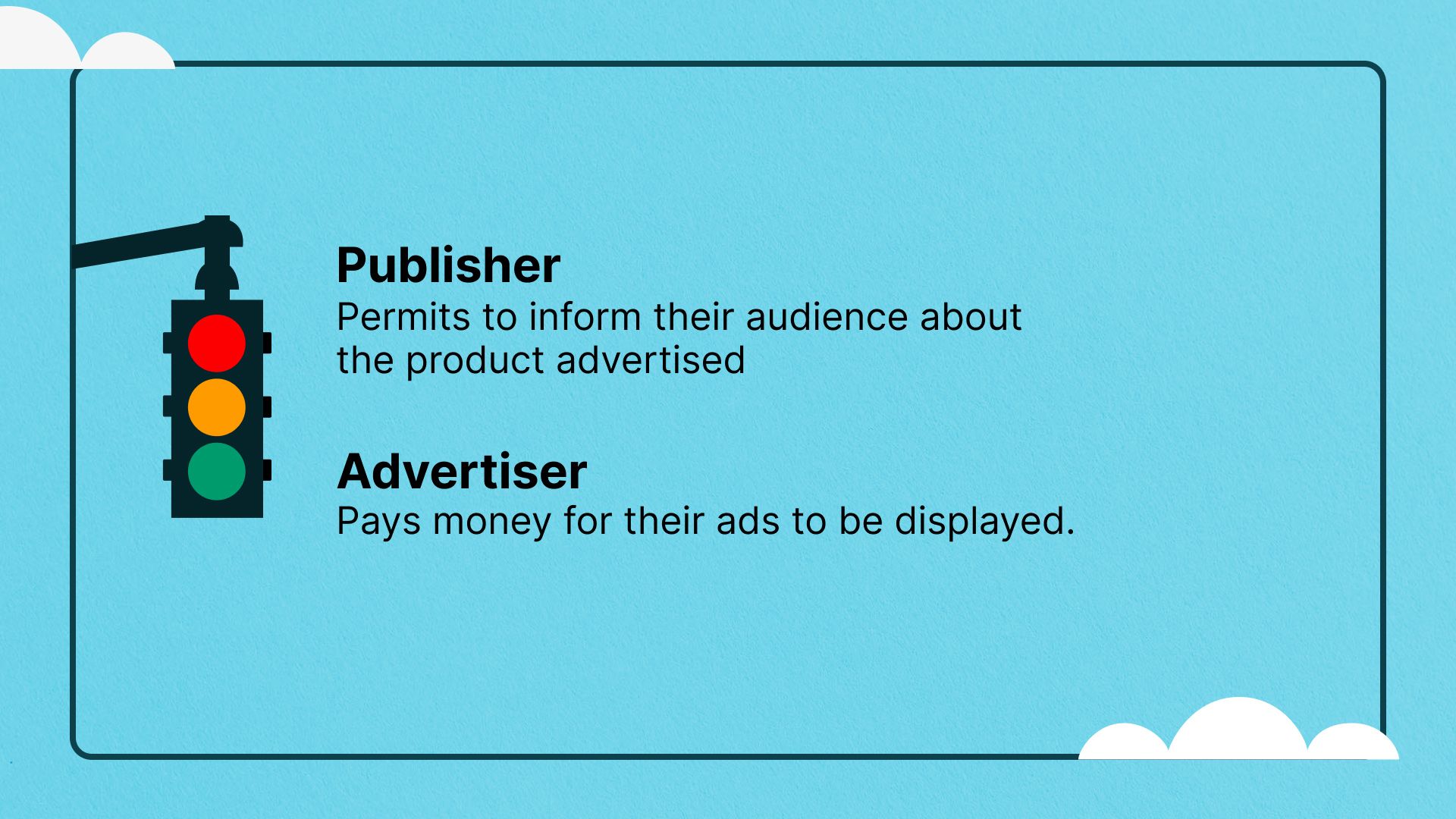
Digital marketing is a two-way street, involving two major parties — a publisher and an advertiser. Both exchange their assets, but what are they exactly?
An advertiser typically pays money for their ad to be displayed. Publisher, in return, permits to inform their audience about the product advertised. If the users start to click on the ad and visit the advertiser’s website, they create a user flow, also known as “traffic”.
Each publisher serves as a traffic source, i.e., generates users for the advertiser.
Different publishers provide traffic sources of varying quality.
Depending on the offer promoted, the same source might be of top quality or total garbage. Ad networks, like HilltopAds, oversee the traffic flow to make sure your ads reach the right audience.
Traffic Source Classification
Types of traffic are numerous.
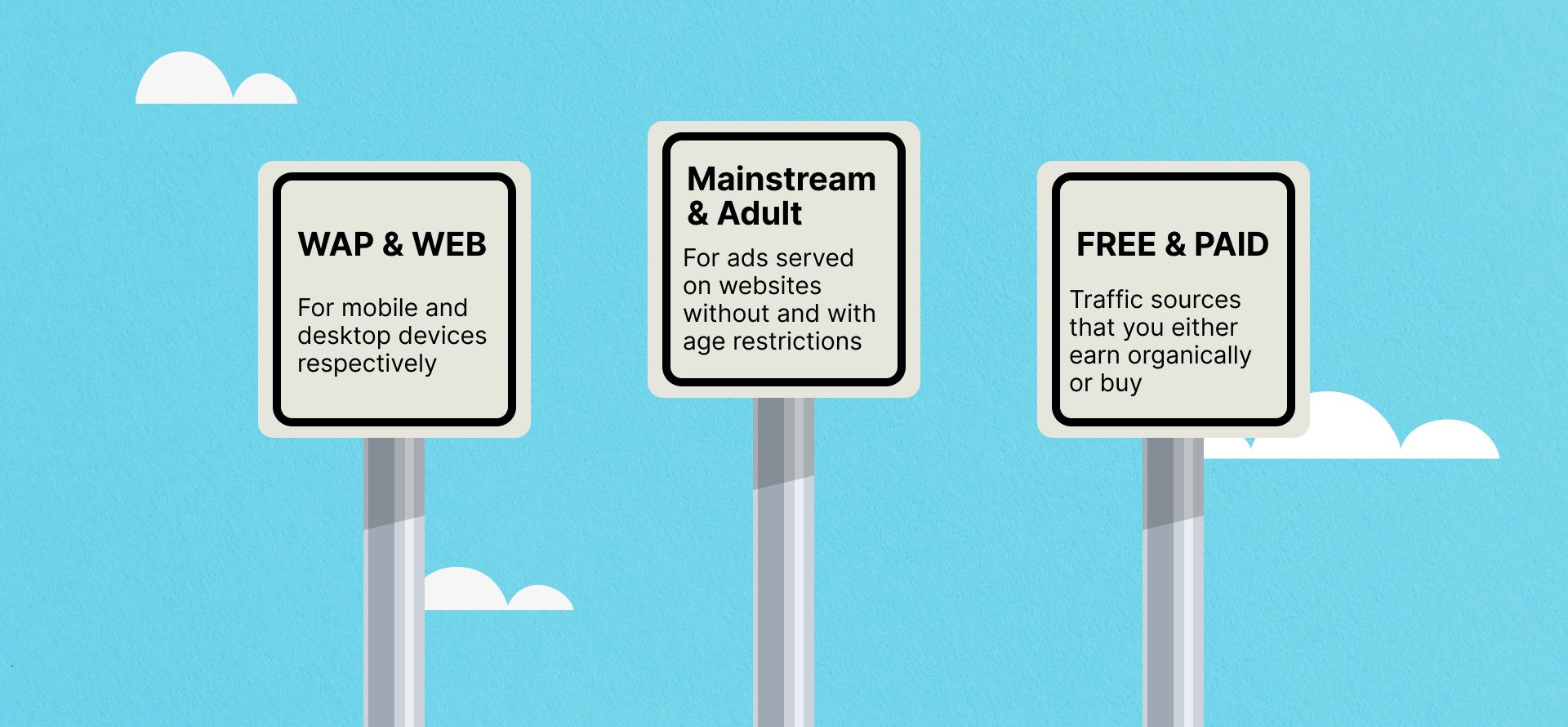
Depending on whether the website visitors use mobile phones or desktops, they can be divided into WAP and WEB traffic sources, respectively.
Ads served on the 18+ websites generate adult traffic, the rest is mainstream traffic.
If the users click on your ads using smartphones, while browsing a non-adult website, you generate WAP (mainstream) traffic.
In terms of origin, traffic can come from social networks, search engine results, email newsletters, forums, or any other media channel.
Traffic sources for a website can also be free or paid.
What is paid traffic? This is when an advertiser buys traffic from a publisher, either directly or indirectly. But there are situations when the traffic is won, instead of being bought.
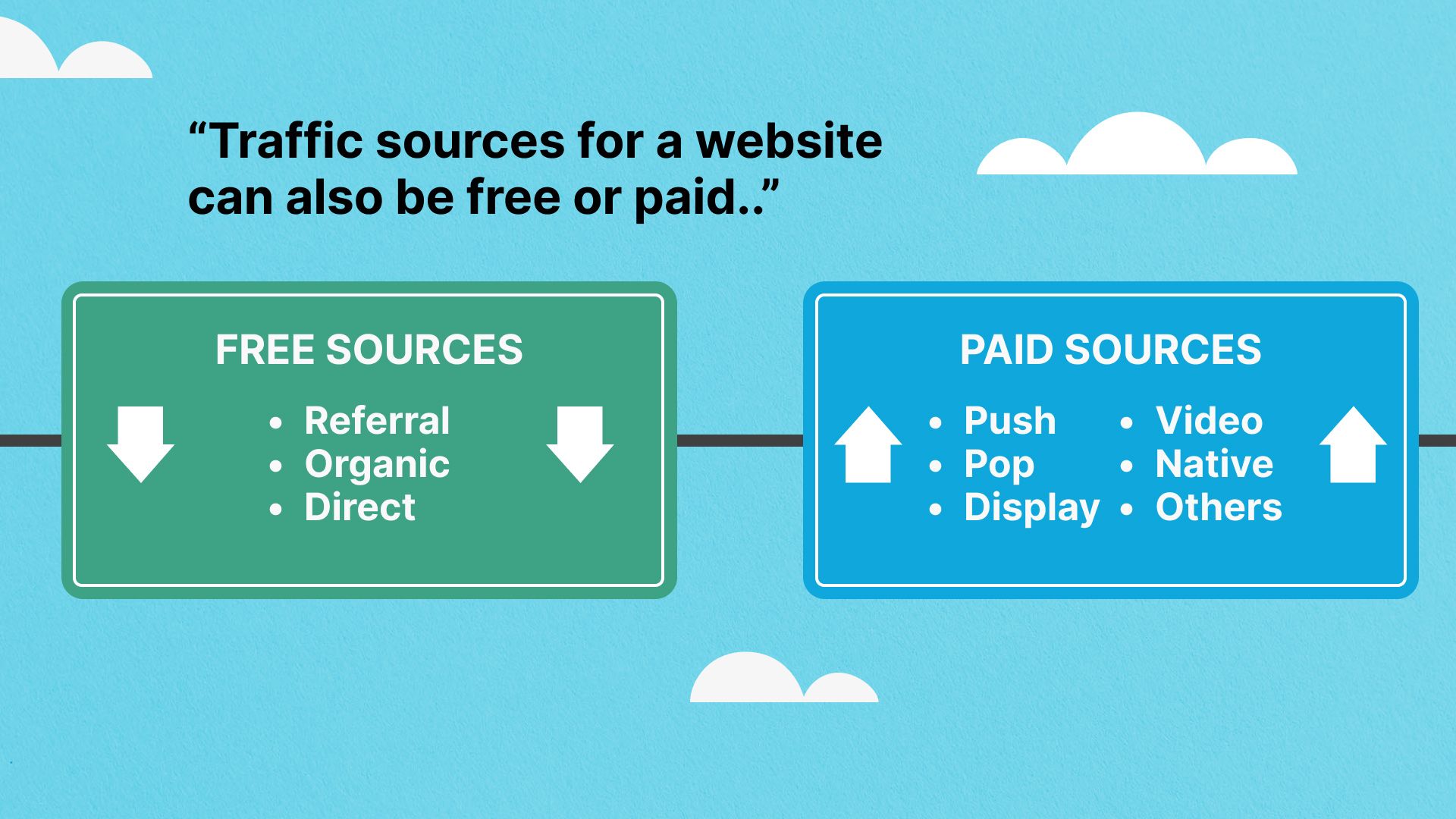
|
Paid traffic |
Push |
|
|
Pop |
|
|
Display |
|
|
Video |
|
|
Native |
|
|
Other ad formats |
|
Free traffic |
Direct — when the user inputs your website address directly, |
|
|
Organic — when the user googles something and clicks on your link, |
|
|
Referral — when the user gets to a larger website and then is redirected to your landing page |
|
Trash Traffic |
Incentive — when the user is paid to complete a certain action |
|
|
Bot — when there is no user at all, only mindless bot |
|
|
Fraudulent — when the user is tricked into a certain action |
|
|
Mixed — a combination of trash and some other traffic |
While trash traffic might be tempting to meet your offer’s KPIs, it won’t bring substantial revenue in the long run.
Eventually, the owner of the offer will detect the deception and cut off the bad traffic source, because it doesn’t help to sell the product.
Paid Traffic vs. Free Traffic
Also known as Pay-per-Click (PPC) and Search Engine Optimization (SEO) traffic, these promotional strategies complement each other.
PPC is an example of outbound marketing when the marketer comes to users, offering some product.
Contrary, SEO specialists focus on inbound marketing. Content creation, social media marketing, keyword optimization — everything to win over the hearts and minds of the audience. The users become engaged and visit the marketer’s website because they want to — all that’s left is to integrate an ad or two.
Neither strategy is perfect:
- Paid traffic delivers quicker results, greater reach, immediate buyers, and complete data but requires money
- Free traffic is cost-efficient and long-term oriented but requires commitment and 4–12 months to set up
Sometimes you just need the results here and now.
Paid advertising at HilltopAds is your best bet at generating users of quality fast.
Paid and free traffic sources are not mutually exclusive, so mix them up in your ad campaigns for greater stability and robustness.
Where to Get Traffic
How to find website traffic and what websites are credible sources? — you may ask.
Google is the behemoth of paid search traffic, generating 8.5 billion search queries daily. But there are other popular search engines like Yahoo, Bing, Yandex, and some more. Sign in to Google Ads or any other search engine ad dashboard to start generating search traffic.
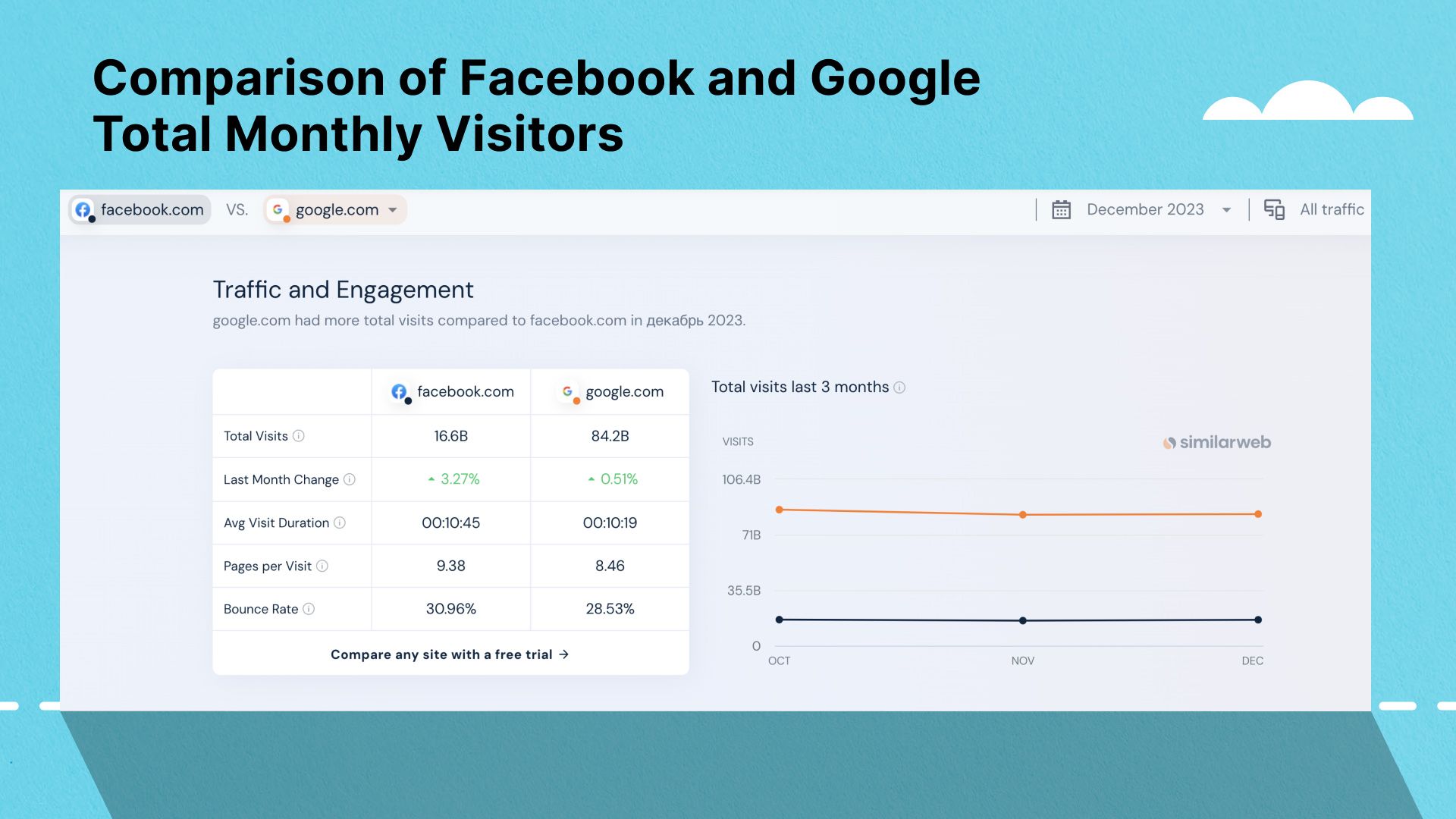
Another mainstream traffic source is Facebook — it’s a staple of social traffic. In December 2023, it enjoyed 16+ billion visits, ranking third after Google and YouTube.
To start advertising on FB, you must sign up for Meta Ads Manager. As the name suggests, this dashboard allows creating ad campaigns not only for Facebook, but Instagram, WhatsApp, and Messenger — other popular social platforms from Meta.
Additional traffic sources include YouTube, X, Snapchat, Reddit, Pinterest, and minor websites. Although contacting every prospect one by one is an option, it can be time-consuming and inefficient.
Ad networks serve as a solution, uniting publishers and advertisers on a single platform.
At HilltopAds, we’ve done all the research and negotiations already. Sign up to our platform, get all-around support, and create a campaign — done. Our platform will take it from here and pick the most optimal traffic sources for your campaign.
Traffic Quality Estimation
Sometimes, however, you can’t help but be eager to know how to find traffic sources of a website.
You might want to figure out which channels drive the most traffic for the least price, how visitors engage with your website, and which strategies do work.
It’s also a good idea to see how the competitors perform: which pages and posts enjoy the highest traffic volume, which keywords rank them higher, which marketing channels they rely on, etc.
In order to find website traffic sources, you need an analytical platform. The bread and butter of any affiliate marketer are Google Analytics and Google Search Console.
These tools are free and go hand in hand. Google Analytics helps to understand your core audience profile, like age, sex, demographics, preferences, and so on. Google Search Console focuses rather on your website: Impressions, Clicks, CTR, Keywords, Backlinks, etc.

Many analytical platforms challenge Google’s supremacy. Semrush, SimilarWeb, Ahrefs — are just a few alternatives.
No matter the solution you prefer, it’s important to be aware of the following website traffic metrics:
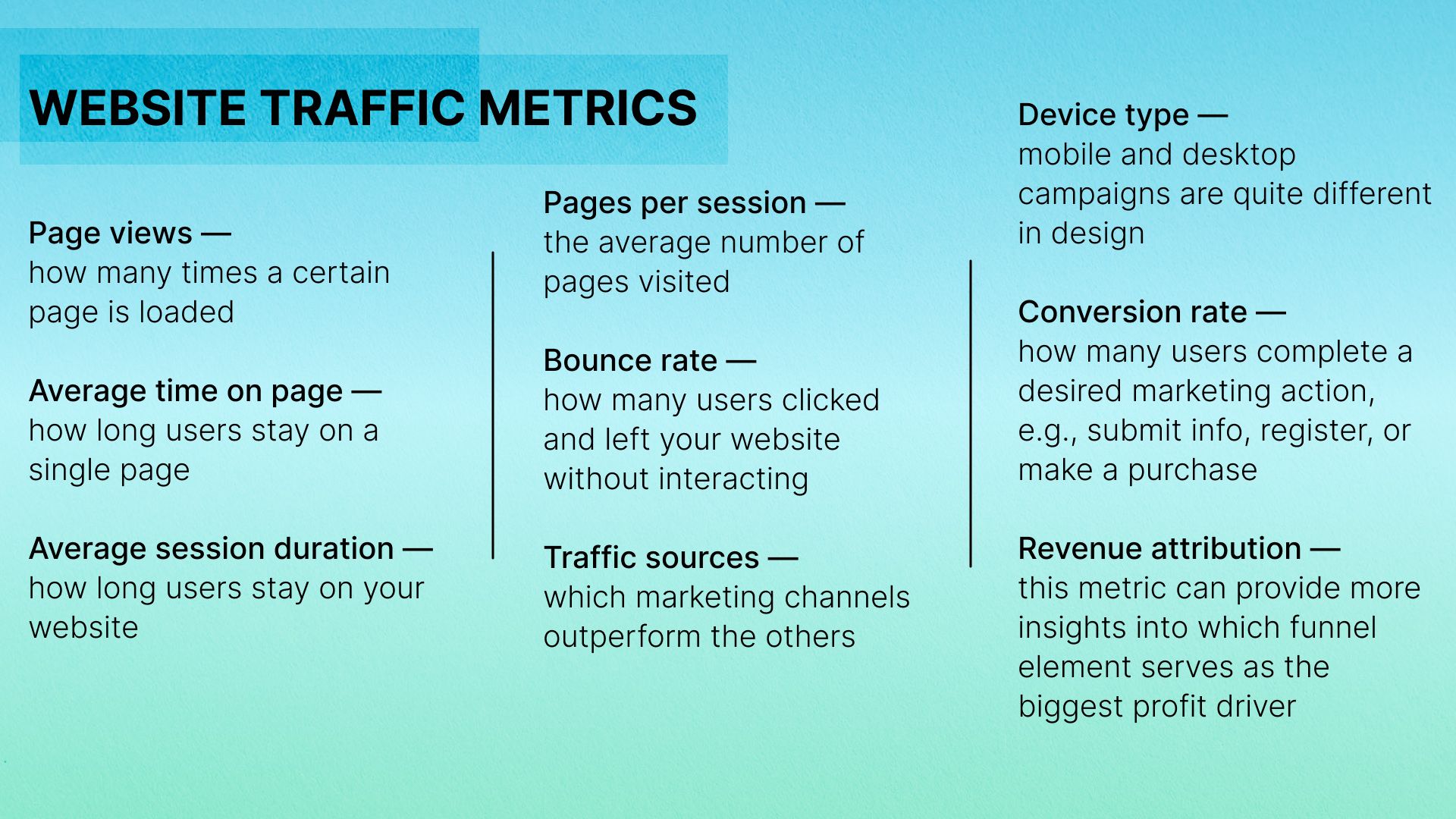
|
Page views |
how many times a certain page is loaded |
|
Average time on page |
how long users stay on a single page |
|
Average session duration |
how long users stay on your website |
|
Pages per session |
the average number of pages visited |
|
Bounce rate |
how many users clicked and left your website without interacting |
|
Traffic sources |
which marketing channels outperform the others |
|
Device type |
mobile and desktop campaigns are quite different in design |
|
Conversion rate |
how many users complete a desired marketing action, e.g., submit info, register, or make a purchase |
|
Revenue attribution |
this metric can provide more insights into which funnel element serves as the biggest profit driver |
Of course, the reality is a bit more complex. The user might purchase after seeing a push notification. However, the success of this notification might be grounded in previous interactions with your ads. The converted user might have clicked on your banner much earlier and noted your offer. This is especially true for eCommerce, VPNs, and Cleaners.
In a nutshell, the more metrics you track, the better off you are. Our dashboard enables you to track all the essential metrics of your campaigns, traffic volume for the targeting settings specified included. However, our team of experts keeps a sharp eye on traffic quality, so you have nothing to worry about.
Conclusion
Traffic is the flow of users. There are a lot of traffic sources out there. They can be grouped in a few ways: WAP vs. WEB, adult vs. non-adult, paid vs. free, and by the media type used. Steer clear of trash traffic, as for the rest — they all can suit your advertising needs. Just make sure to double-check the offer’s KPIs to meet its terms and conditions.
Good traffic sources are many, but it’s just easier to work with them using an ad network, like HilltopAds. We’ve done all the work for you already, you just need to launch a campaign. Moreover, we will assist at every campaign stage, so sign up now and let’s start generating traffic. We maintain our traffic at a top-quality level and make sure you generate only the most relevant leads for your advertising needs.
